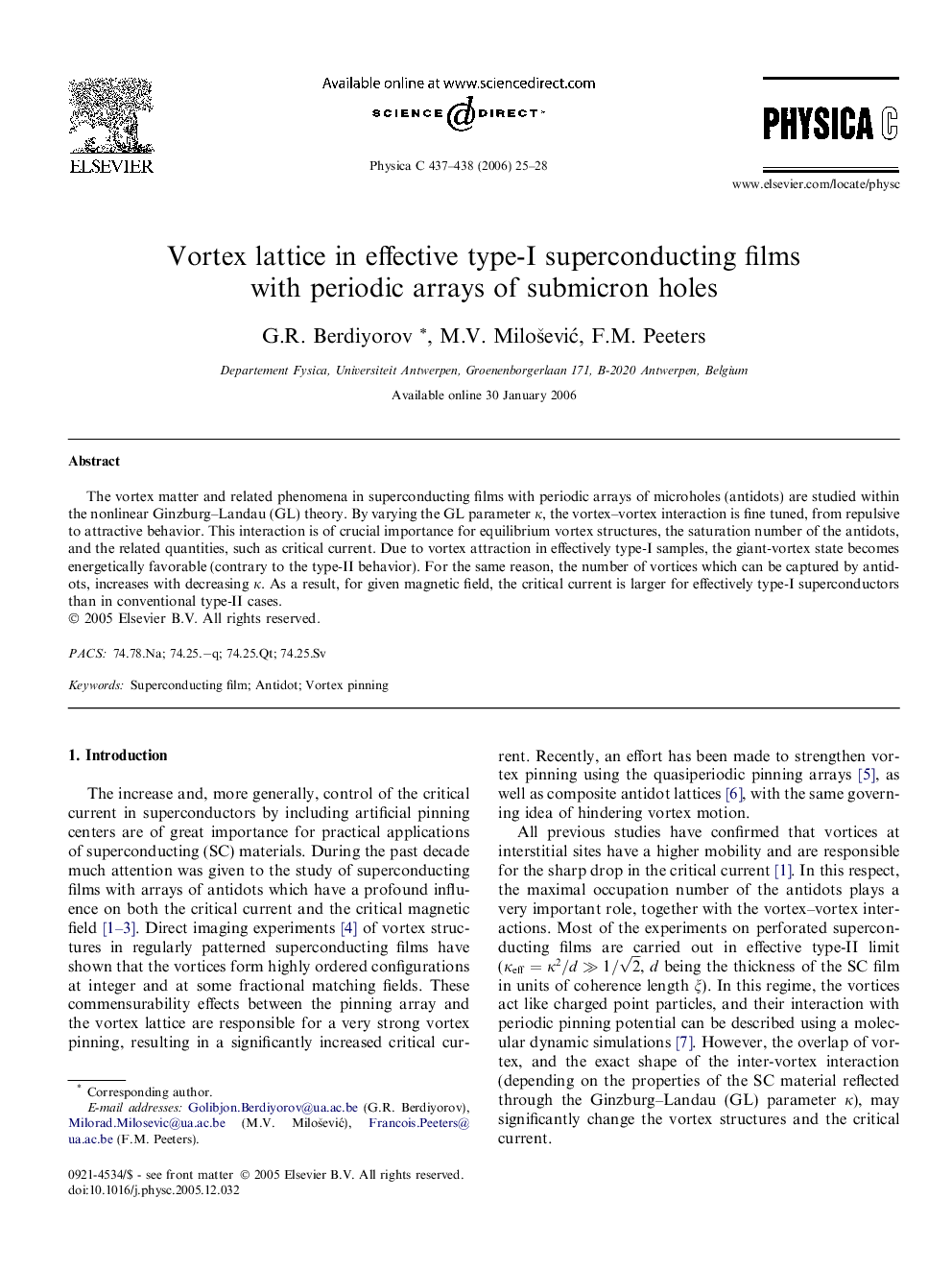| Article ID | Journal | Published Year | Pages | File Type |
|---|---|---|---|---|
| 1820917 | Physica C: Superconductivity and its Applications | 2006 | 4 Pages |
Abstract
The vortex matter and related phenomena in superconducting films with periodic arrays of microholes (antidots) are studied within the nonlinear Ginzburg-Landau (GL) theory. By varying the GL parameter κ, the vortex-vortex interaction is fine tuned, from repulsive to attractive behavior. This interaction is of crucial importance for equilibrium vortex structures, the saturation number of the antidots, and the related quantities, such as critical current. Due to vortex attraction in effectively type-I samples, the giant-vortex state becomes energetically favorable (contrary to the type-II behavior). For the same reason, the number of vortices which can be captured by antidots, increases with decreasing κ. As a result, for given magnetic field, the critical current is larger for effectively type-I superconductors than in conventional type-II cases.
Related Topics
Physical Sciences and Engineering
Physics and Astronomy
Condensed Matter Physics
Authors
G.R. Berdiyorov, M.V. MiloÅ¡eviÄ, F.M. Peeters,
